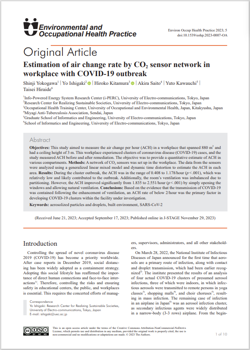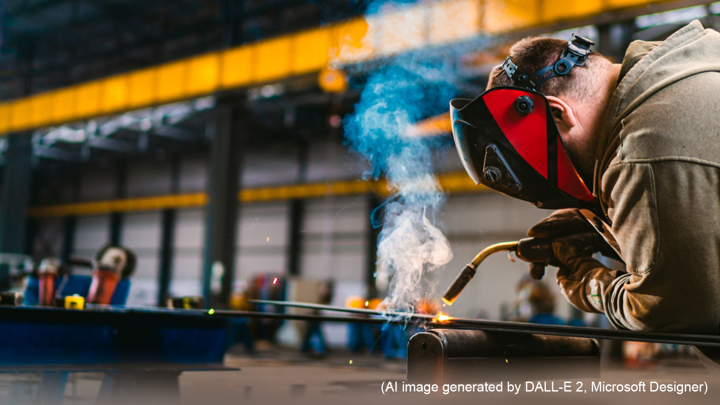#E0068 Crucial Insights Unveiled: Revolutionizing Workplace Ventilation to Fight COVID-19 Clusters

Crucial Insights Unveiled: Revolutionizing Workplace Ventilation to Fight COVID-19 Clusters
Workplace ventilation especially during COVID-19 pandemic has emerged as a matter of great significance. In this study, researchers conducted a study to measure the air change per hour (ACH) in a workplace that experienced clusters of COVID-19 cases. The objective was to provide a quantitative estimate of ACH in different areas of the workplace.
To achieve the above a network of CO2 sensors was set up to collect data, which was analyzed using statistical models and dynamic time distortion. The study found that during the cluster outbreak, the ACH ranged from 0.408 to 1.178/hour, which was relatively low and likely contributed to the outbreak. The ventilation in the room was imbalanced due to partitioning. However, by simply opening the windows and allowing natural ventilation, the ACH significantly improved from 1.835 to 2.551/hour. The findings align with recommendations by the Japanese Ministry of Health, Labour, and Welfare, which suggest providing ventilation at least twice an hour in workplaces without proper ventilation structures. Workplaces with an ACH of 2 or higher have been shown to reduce the probability of tuberculosis infection, which is transmitted through aerosols.
Furthermore, the study demonstrated that partitions hindered proper ventilation and affected the fluctuation in ACH based on sensor location and airflow direction. Improved ventilation conditions were found to be effective in reducing the risk of infection clusters. The study highlighted the importance of removing unnecessary partitions and minimizing the height and width of necessary partitions to avoid interfering with ventilation. Portable fans could be used to promote localized ventilation in areas with stagnant air. The research also emphasized the need for education regarding ventilation risks in older buildings without mechanical ventilation.
To investigate the cause of COVID-19 clustering and prevent its recurrence, simultaneous measurements, and analysis of CO2 concentrations in multiple locations within a room were recommended. This approach, along with real-time sensor networks and data integration, could help identify compartments at increased risk and issue timely alerts. The study acknowledged limitations such as the temporary unoccupancy of the workplace during the experiment and the need for further research and reproducibility in different environments.
Overall, the findings provide valuable insights for improving ventilation in public places and emphasize the importance of considering ACH in infection control measures, such as, in school classrooms or public transportation.

Link to the original journal article:
https://www.jstage.jst.go.jp/article/eohp/5/1/5_2023-0007-OA/_article
Title of the paper:
Estimation of air change rate by CO2 sensor network in workplace with COVID-19 outbreak
Authors:
Shinji Yokogawa, Yo Ishigaki, Hiroko Kitamura, Akira Saito, Yuto Kawauchi, Taisei Hiraide




